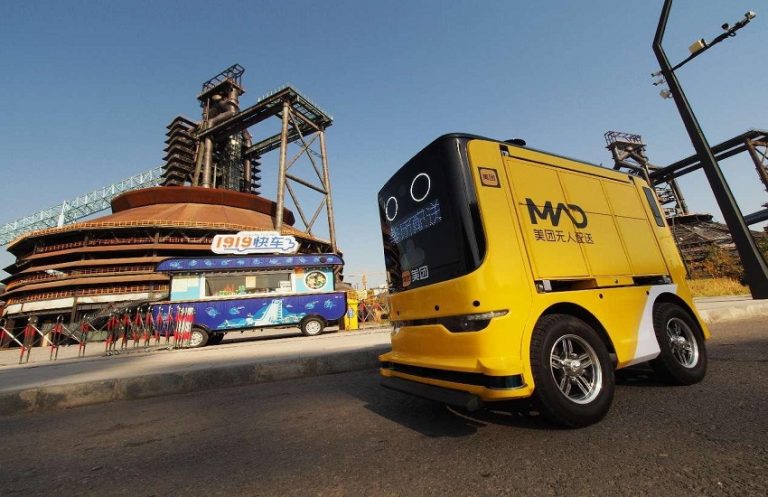
By Han Xin, In recent years, with the rapid development of new technologies such as artificial intelligence (AI), 5G, and big data, autonomous driving has been increasingly applied in the transportation sector in China. From being tested in closed test fields and on designated roads, it is now being piloted and employed in commercial trial operations.
China’s Ministry of Transport recently issued a trial safety guideline on the use of driverless vehicles in the public transportation sector. It marked the first time for China to state in a national policy that intelligent connected vehicles can be used for commercial transportation and is believed to accelerate the commercialization of self-driving technology across the country.
In recent years, the autonomous driving industry in China has experienced rapid growth, along with an expanding market. Currently, there are 17 national-level autonomous driving demonstration zones and 7 national-level pilot zones for intelligent connected vehicles across the country. These zones have opened up over 22,000 kilometers of roads for testing, accumulating a total test mileage of over 70 million kilometers.
Beijing, Shanghai, Guangzhou, Shenzhen, and some other cities have introduced policies allowing autonomous vehicles to engage in commercial trial operations in specific areas and during specific periods, including urban public transportation, taxi services, and logistics delivery. The scale of application continues to expand in these cities.
It is reported that in the Shunyi district of Beijing, the autonomous delivery vehicles of Meituan, a Chinese shopping platform for locally found consumer products and retail services, are delivering thousands of orders per day.
With an Apollo Go mobile application, passengers in Wuhan Economic and Technological Development Zone, central China’s Hubei province, can hail a fully autonomous vehicle after a few taps on their phones to set their pick-up and drop-off locations in the app.
Once a destination is confirmed, the vehicle will drive according to the predetermined route. Equipped with fisheye cameras and laser sensors, the vehicle can accurately avoid obstacles and automatically adjust its speed based on traffic conditions.
Wuhan has launched 300 unmanned vehicles since it initiated the fully driverless robotaxi service in August 2022, which serves a population of over 4 million people.
Currently, there are over 200 autonomous city buses, more than 1,500 autonomous taxis, and approximately 1,000 autonomous trucks operating nationwide. Apollo autonomous driving, developed by Chinese tech giant Baidu, has accumulated a test mileage of over 78 million kilometers, providing transportation services in over 10 cities.
Continuously enhancing safety capabilities is the primary goal of transportation services and a fundamental requirement for the widespread application of autonomous vehicles in the transportation sector. The concept of safety is consistently emphasized in the measures proposed by the guideline.
Overall, the guideline has established a safety assurance system from six aspects: safety production system, transportation safety protection, operational status information management, vehicle dynamic monitoring, safety notification, and emergency response. This provides regulatory compliance for autonomous vehicles to engage in road transportation operations safely.
The guideline specifically proposed the concept of “security inspector” – the person responsible for overseeing the safe operation of an autonomous vehicle in-cabin or remotely.
Li Bin, deputy director of the Research Institute of Highway under China’s Ministry of Transport, noted that the guideline fully considers the commercial models of autonomous driving in different forms. While ensuring safety, the guideline sets regulations on the allocation of safety personnel, skills, and qualifications for different transportation operations.
According to the guidelines, the safe operation of fully autonomous taxis can be ensured by remote security inspectors. The guideline said that with the approval of local governments, fully autonomous taxis could be operated unmanned over designated areas with one security inspector overseeing them remotely, and the ratio of remote security inspectors to taxis shall not be lower than 1:3.
The guideline specifies the application scenarios for autonomous driving vehicles to provide road transportation services.
For autonomous city buses, relevant passenger transport operations can be carried out in physically enclosed, relatively enclosed, or fixed routes with simple traffic conditions where traffic safety is controllable.
Autonomous taxis are allowed to carry out passenger transport operations in scenarios with good traffic conditions and controllable traffic safety.
Besides, autonomous vehicles are prohibited from engaging in road transportation operations for dangerous goods.
The guideline also clarifies the responsibilities of the providers of autonomous transport services. For instance, the operators of autonomous taxis and other passenger vehicles should purchase carrier’s liability insurance according to laws.
“The increasingly improved environment for industrial development provides possibilities for the accelerated application of autonomous vehicles in the transportation service sector,” said Wang Xianjin, vice president of the China Academy of Transportation Sciences, which is a part of the Ministry of Transport.
The release of the guideline has laid a solid foundation for the safe application of autonomous driving vehicles and also leaves ample room for innovative applications, Wang said, adding that this will further promote the application of autonomous driving technology in the transportation sector.










